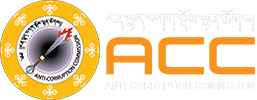TI released its CPI for 2015 on 27th January 2016. According to TI, “The Corruption Perception Index ranks countries and territories based on how corrupt their public sector is perceived to be. A country or territory’s score indicates the perceived level of public sector corruption on a scale of 0-100, where 0 means that a country is perceived as highly corrupt and 100 means it is perceived as very clean. A country’s rank indicates its position relative to the other countries and territories included in the index”.
TI has made some important changes based on rigorous review process to the methodology in 2012. The method used to aggregate different data sources has been simplified and also includes just one year’s data from each data source. From 2012 onwards, year to year comparisons of score is possible with this change.
In releasing TI-CPI 2015, the press release encourages collective citizenry action against corruption – “corruption can be beaten if we work together. To stamp out the abuse of power, bribery and shed light on secret deals, citizens must together tell their governments they have had enough.” According to TI-CPI report “reversing corruption is clearly not solely down to governments, but they’re the ones with the largest role and the power to create enabling environments for others.” Further, the report highlights collective citizenry action “governments need to ensure real and systemic reform – […] creating better regional cooperation between law enforcement to stop the corrupt hiding in different jurisdictions. Citizens, meanwhile, should continue their calls for change.”
TI-CPI 2015 has ranked 168 countries and territories. TI-CPI 2015 has ranked Denmark with a score of 91, Finland with a score of 90 and Sweden with a score of 89 as the least corrupt countries. Somalia and North Korea with a score of 8 each are ranked as the most corrupt countries.
TI-CPI 2015 for Bhutan
In TI-CPI 2015, Bhutan is ranked 27th with a score of 65. In comparison to TI-CPI 2014, Bhutan’s position has increased by three places while sustaining its score of 65. Since Bhutan was included by the TI in CPI ranking in 2006, its rank and score have improved over the years. Graph I and Table I below show Bhutan’s improvements. Comparing with global and Asia Pacific Region’s average score of 43 each, Bhutan’s score of 65 is significantly higher, exhibiting better control of corruption in Bhutan. It is worthwhile to note that Bhutan has sustained the score of 65 – close to European Union and Western Europe average score of 67, which is more than 60 threshold as score is more important than rank. Sixty-seven percent of the countries scored above 50 points out of 100.

In terms of ranking, Bhutan has moved from 32nd position in 2006 with a sharp drop to 49th position in 2010 to 27th in 2015. The 26 countries placed above Bhutan fall within the “high income” and developed countries. However, Bhutan with GNI per capita US $ 2,370 is ranked above other “high income” countries such as Botswana with GNI per capita US $ 7,240, Portugal with GNI per capita US $ 21,360 and Poland with GNI per capita US $ 13,690. Against this backdrop, Bhutan being a “lower middle income” country stands out as an outlier in the fight against corruption.
In the Asia Pacific Region, Bhutan’s rank has sustained its 6th position from 2012 onwards. The Region has countries that are in the top 20 in combating corruption like New Zealand, Singapore, Australia and Hong Kong.
Table 1: TI’s Progressive CPI Ranking and Score for Bhutan
| Year | Global Ranking | No. of participating countries | Score (0-10) | Asia Pacific Ranking | No. of Survey Used | Confidence Range |
| 2006 | 32 | 163 | 6.0 | 7 | 3 | 4.1-7.3 |
| 2007 | 46 | 180 | 5.0 | 10 | 5 | 4.1-5.7 |
| 2008 | 45 | 180 | 5.2 | 9 | 5 | 4.5-5.9 |
| 2009 | 49 | 180 | 5.0 | 10 | 4 | 4.3-5.6 |
| 2010 | 36 | 178 | 5.7 | 7 | 4 | 5.1-6.6 |
| 2011 | 38 | 183 | 5.7 | 7 | 4 | 5.3-6.1 |
| Score (0 -100) | ||||||
| 2012 | 33 | 176 | 63 | 6 | 3 | 57- 69 |
| 2013 | 31 | 177 | 63 | 6 | 4 | 59 – 67 |
| 2014 | 30 | 175 | 65 | 6 | 4 | 62 – 68 |
| 2015 | 27 | 168 | 65 | 6 | 4 | 61 – 69 |
TI normally uses data from a variety of independent and reputable institutions to determine the score and rank of a country. Out of 13 sources, for Bhutan, TI has used Bertelsmann Foundation’s Transformation Index, World Bank’s Country Performance and Institutional Assessment, World Economic Forum’s Executive Opinion Survey and Global Insight’s Country Risk Ratings as the sources for its CPI. In addition, TI uses business people opinion surveys and assessment (scores) provided by country experts or analysts. The data from these different sources are processed using statistical tools and transformations to arrive at the score and rank.
The Commission believes that the CPI 2015 ranking for Bhutan is a continued improvement. Among others, Bhutan’s constant improvement may be largely attributed to political commitment to fight corruption. In particular, the Parliament’s ratification of United Nations Convention Against Corruption, the first piloting of TI – Anti-Corruption Agency Strengthening Initiative: Assessment of Bhutan ACC in 2015 and a functional Bhutan Transparency Initiative in place are few manifestations of such commitment. The Commission remains committed to at least maintain Bhutan’s score through proactive institutionalization of ethics and integrity measures in public, private and civil society sectors based on the government’s National Integrity and Anti-Corruption Strategy 2014 – 2018.
